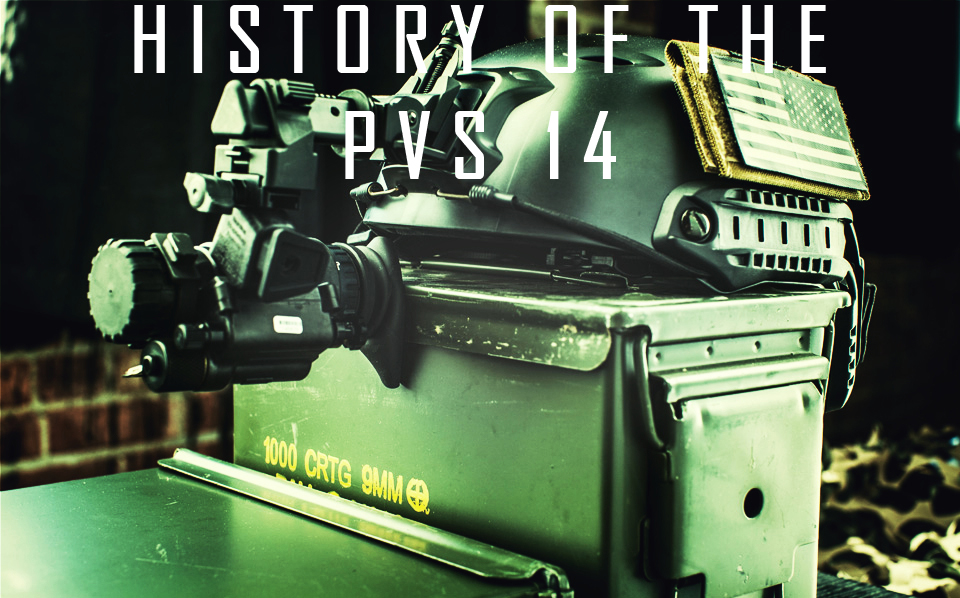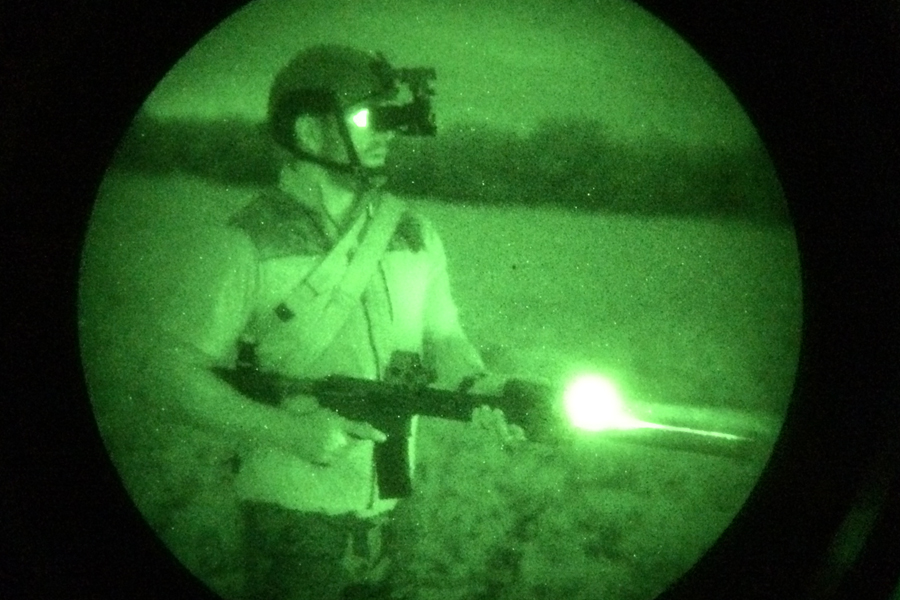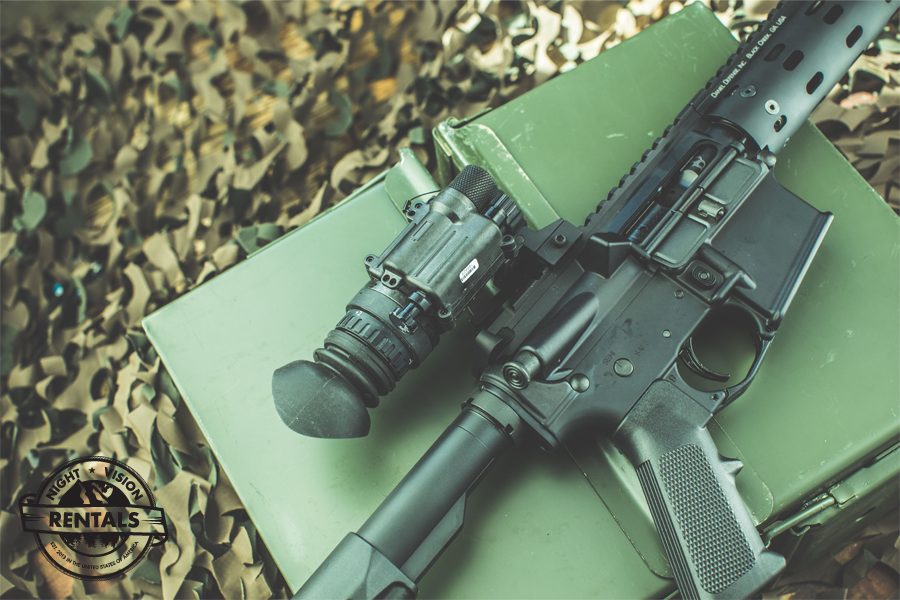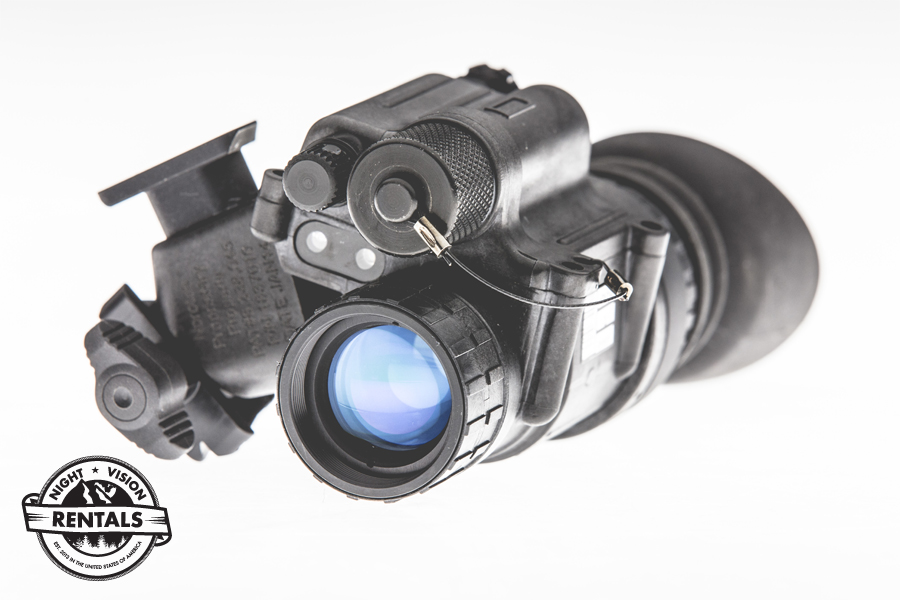
The Portable Visual Search PVS-14 night vision monocular is the current standard for NATO forces, the U.S. Armed Forces, some law enforcement, and Special Ops. With a Gen 3 image intensifier tube, the devices can be used with head mount, weapons mount, or camera mount. Manufactured by TT Exelis and L-3 Warrior Systems, the device helps military personnel and others see in low-light conditions and even allows for very low-light photography.
Not-So-Stealthy Starts
While the PVS-14 night vision monocular may be the technology standard today, where exactly did it come from? The pedigree of the device actually goes back all the way to 1939, when the prototype for the first infrared night vision device for anti-tank guns was developed.
By 1942, night vision devices were being developed for the Germans by Wehrmacht, with more than 300 Panthers during World War II equipped with the devices, which allowed soldiers to see up to 600 meters at night. The early devices were actually little better than searchlights, using infrared filters to pass near-infrared radiation. Practically, this meant that the devices still gave the enemy some illumination and advantage.
By the end of the war, Germany had developed the “Vampir” man-portable night vision system. Portable was a relative term here – the power pack was the size of a medium backpack and the Infrared Illuminator (then known as Black light) was the size of a child’s head. Still, it got the job done and today is considered Gen 0 when it comes to night vision.
The Americans were also busy developing night vision technology during World War II. Known as snooperscope and sniperscope, the M3 and M1 infrared technology was used well into the Korean War. After the war, Dr. Vladimir K. Zworykin of the Radio Corporation of America developed a night vision device for the civilian market. The size, weight, and high cost of the Gen 0 devices was a major stumbling block, though. The devices were clumsy and sensitive to weather conditions – not exactly ideal for the conditions where these devices were used.

Gen 1 Devices
By the 1960s, a major breakthrough came through in the form of Gen 1 devices. First developed in 1961 and put into service in 1965 during the Vietnam War, AN/PVS-2 Starlight scopes were exciting because they were the first passive devices using an image intensifier to amplify existing light. The big deal was that no infrared light source was needed. As long as you had a moonlit night (a night with lots of moonlight, admittedly), you could use night vision without the need to shine a light to reveal your location to others. Still bulky, still requiring some light, these devices were starting to move in the direction of stealth. The AN/PVS-2 Starlight scopes could be mounted on M1 or M16 and had battery life of up to 100 hours.

Making Night Vision Lighter and Clearer
Generation 2 devices had a brighter image and a better, lighter image-intensifier tube. Devices such as the AN/PVS-4, the AN/PVS-5, and the SUPERGEN allowed for better vision even in lower-light conditions – you no longer needed a half moon or better to see. Better optics and lighter devices also meant that the technology finally started to be more portable, paving the way to mass production. In fact, by 1975 Dallas-based Optic Electronic Company could mass produce the AN/PVS-4, which had automatic brightness controls, 25 mm variable gain screw-type image intensifier tube, and automatic shutoff.
Generation 3 Arrives
Gen 3 night vision arrived in the 1980s, when Litton and ITT/Varo Joint Venture were tasked with creating a replacement for the AN/PVS-5. In response to the challenge, ITT introduced the AN/PVS-7B while Litton launched AN/PVS-7A. The PVS-7 was a night vision bi-ocular goggle designed around the Generation III image intensifier tubes. With sophisticated lenses and the ability to allow work in near-dark conditions, these devices were better at helping the military see in a variety of conditions.
The AN/PVS-14 was developed in the late 1990s thanks to the development of the MX-11769 image tube. With multi-function and manual gain control, the MX-11769 image tube was exciting because it made the AN/PVS-14 even lighter and more versatile than earlier devices. Used in control and command missions, the AN/PVS-14 quickly became popular with combat infantry, law enforcement, and the military. The device could be used with an aiming light or alone and could be used with a head mount, weapons mount, helmet mount, or could be handheld. The devices came with a low battery indicator, and an infrared LED with indication. Options 3X or 5x magnifiers can be used with the devices.
ITT developed the first PVS-14s with dual batteries, but quickly switched to single battery design to save even more weight. ITT also launched the dual battery Night Quest, which was the PVS-14 for the commercial market. The Night Quest would automatically adjust the gain by interpreting the amount of light available.
The Night Enforcer was another ITT PVS-14 product, developed for the law enforcement industry. With a single battery design, these PVS-14s has a manually adjustable gain and similar housing as the military issue PVS-14s. Eventually, all PVS-14s made by ITT were developed with PINNACLE© thin film technology, which allows more light but also reduces the halo effect present with outside light sources. With this technology, users don’t need to worry about being temporarily blinded when using the devices near streetlights, for example.
Today, the PVS-14 is standard in many operations, although Gen 3+ technology and the development of ever-newer and lighter devices mean that these devices, too, will eventually be retired. For now, the PVS-14 offers flexibility and reliability in a variety of conditions.
